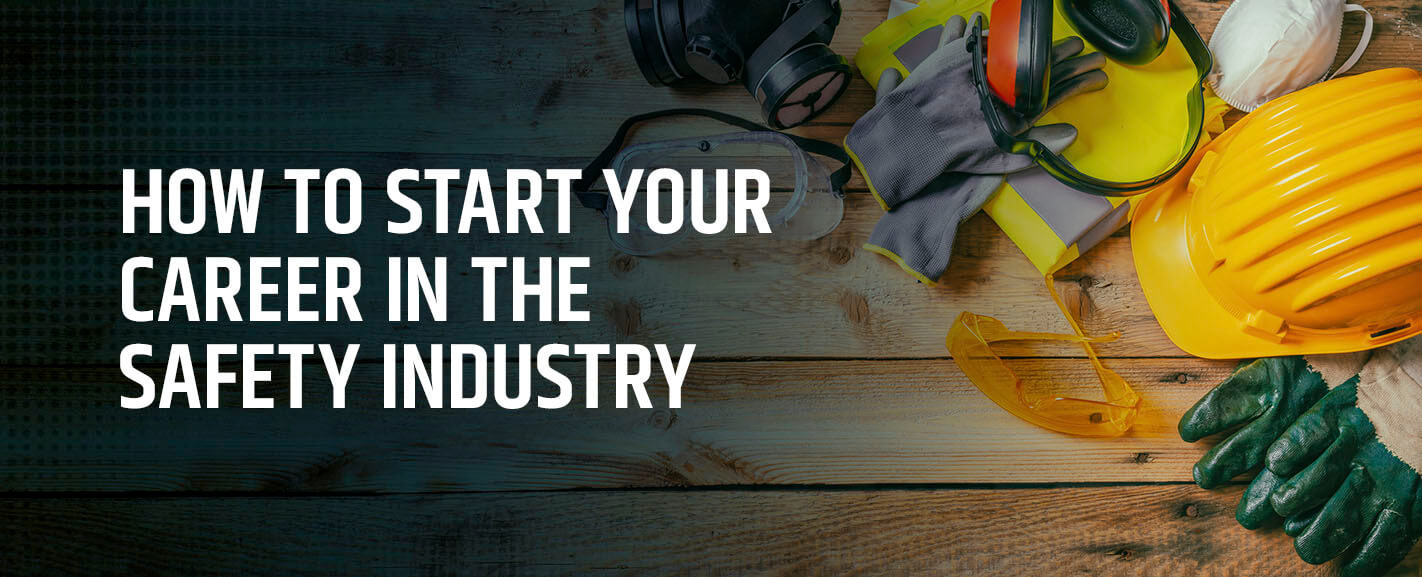How to Start Your Career in the Safety Industry

Your company can only accomplish its goals with a healthy team. The occupational safety and health (OSH) profession attracts those interested in general industry, construction, oil and gas and even government positions, but how do you get started?
If you want to educate employees about the right ways to operate in the workplace, you’ll be glad to know you can become a safety professional in just a few steps. The safety industry requires adequate training. Many people kickstart a new career path in a matter of months.
Reasons You Should Choose a Career in the Safety Field
Working in the occupational safety and health industry is rewarding as you help form a safe working environment for others. These duties involve analyzing work areas to ensure illnesses, injuries and fatalities are out of the realm of possibilities.
You may find the OSH field attractive, especially since there’s an abundance of openings in the industry. In fact, there’s an ongoing demand for professionals in this sector worldwide. You’ll also benefit from career advancement opportunities and impressive salaries.
What Does a Safety Professional Do on the Job?
Safety professionals are sometimes called safety officers. While responsibilities look different daily, the main objective is to verify workers can finish tasks with as few hazards present as possible.
A safety professional will influence a company’s culture by making sure workers are trained properly and abide by rules to protect groups of people, merchandise and property. Common jobs of a safety professional include:
- Establishing a health and safety management plan.
- Developing and scheduling employee training.
- Reviewing workplace conditions.
- Reporting and following up with employee accidents.
- Staying up to date with the laws and regulations of the industry.
- Ensuring health and safety equipment is readily available for employees.
- Verifying that workers understand how to use health and safety equipment.
- Monitoring the condition of health and safety gear.
- Performing safety inspections on a routine basis.
The Process for Kickstarting Your New Career
The journey to becoming a safety professional differs from industry to industry. Use these steps to move into a new career field:
- Select an industry: Safety officers are necessary across fields from manufacturing, retail, warehousing, construction, and oil and gas. Picking one area to focus on helps you follow the correct path for training and obtaining certifications.
- Start building experience: Gain experience in the field you hope to work in as a safety officer, which might involve working part-time or volunteering.
- Take training courses: Find out what training courses and certificates will help you land a job in the industry you choose. Some safety professional courses are offered online for convenience.
- Complete a job shadow experience: Shadowing someone who works in the health and safety industry may help you get your foot in the door.
- Apply for jobs: Start searching for health and safety jobs near you. Depending on your professional network, you may find opportunities through word of mouth.
Skills and Traits to Become a Safety Professional
While anyone can become a safety professional with the right training, it helps to know what you’re getting yourself into before making the career change. Check out some of the most applicable skills and personality traits you’ll need to succeed.
Excellent Communication Skills
You’ll be working with managers and employees across different departments. It’s vital you focus on making your written and spoken messages clear. You must feel comfortable expressing what you need to help your company stay compliant.
Not all leaders and employees respond to safety initiatives the same way, so maintaining eye contact, looking into a camera during remote meetings and standing with a proud posture are fantastic ways to get your messages across loud and clear.
Additionally, you’ll need to be a solid listener. Hearing what your employees have to say about their daily responsibilities helps you mitigate safety risks.
Desire to Learn From Mentors
There are different tiers of safety professionals. You may be hired on as a junior safety officer before working your way to a higher position of authority. Learning what you can from your superiors sets you up for career growth.
Ability to Establish Boundaries Respectfully
Pushing health and safety policies on workers too aggressively may give you a “safety cop” reputation. On the other hand, employees may have trouble respecting rules and regulations if you’re overly lenient.
Differentiate when to draw a line in the sand with workers to set the tone for your health and safety policy. Defining your expectations is a proactive way to put others first and stay out of the line of fire with upper management.
Check Out Workplace Safety Training Courses From the National Association of Safety Professionals
NASP is your source for health and safety training courses that allow you to meet or exceed Occupational Safety and Health Administration (OSHA) standards in the workplace. Take the practical approach to workplace safety training when you sign up for online and instructor-led development courses with us.
As you progress with your experience, you may also qualify for NASP’s professional safety certifications. Click here to find out more.
Have questions about our services? Fill out a contact form with NASP to learn more about how we can help you accomplish your career goals.
Blog Posts
Latest Posts
Related Posts




